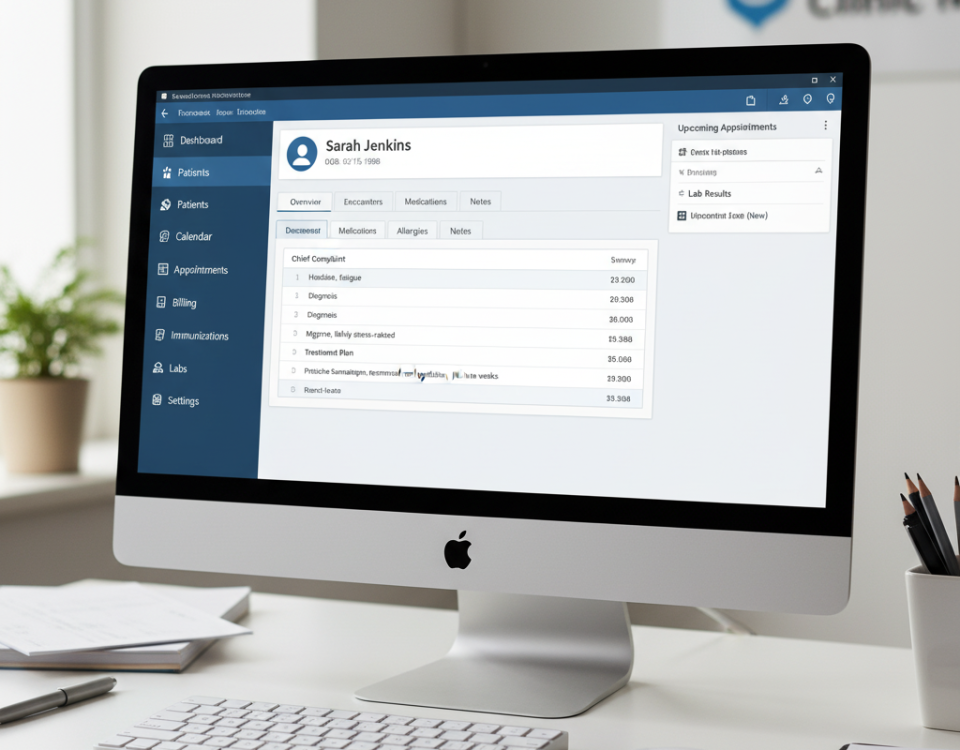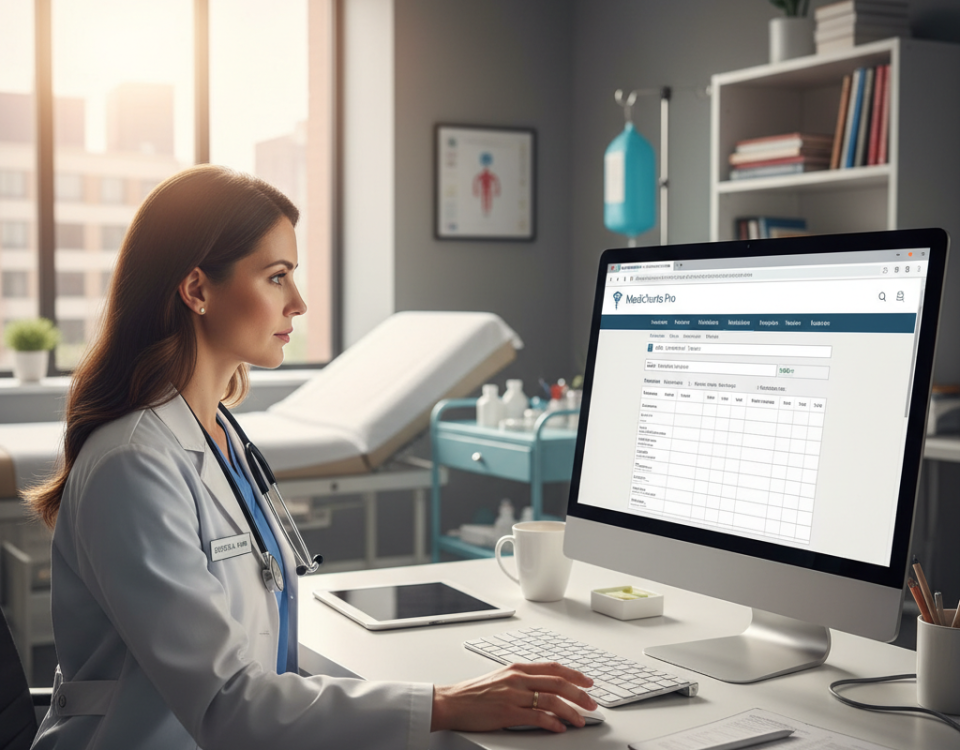- Home
- About Us
- EMR Features
-
-
- EMR Features
-
- Patient Health Features
-
- Clinic Features
-
-
- Specialties
-
- Blog
- Contact Us
Is Your Current EMR System Holding You Back? Signs It’s Time to Upgrade

Electronic Medical Records (EMR) have become the backbone of efficient healthcare delivery in Canada. Yet, not all EMR solutions in Ontario are created equal. Many clinics and practices find themselves struggling with outdated or inefficient systems that hinder productivity, frustrate staff, and even put compliance at risk. As healthcare evolves, so must the technology supporting it. Recognizing when a medical EMR system is holding a practice back is crucial for long-term success and patient care.
A modern EMR solution should empower providers, streamline workflows, and support seamless integration with other tools. If the current system causes more headaches than it solves, it could be time to consider an upgrade. Below are key signs that indicate a medical EMR system may be overdue for replacement, and why making the switch can future-proof any practice.
1. Frequent System Downtime or Glitches
Unplanned downtime and recurring glitches are more than just annoyances—they disrupt daily operations and impact patient care. If an EMR platform frequently crashes or lags, staff may spend valuable time troubleshooting instead of focusing on patients. Persistent technical issues can also lead to lost data, billing delays, and increased administrative costs. Modern EMR solutions offer robust reliability, automatic updates, and responsive support, ensuring that clinics run smoothly with minimal interruptions.
2. Poor User Interface and Navigation
A medical EMR system should make tasks easier, not more complicated. Outdated platforms often feature clunky interfaces, confusing menus, and non-intuitive navigation. When staff struggle to find information or complete routine tasks, productivity drops, and the risk of errors increases. Practices may notice that team members spend too much time on data entry or searching for patient records, leading to frustration and burnout. Upgrading to an EMR solution with a user-friendly interface can dramatically improve workflow and staff satisfaction.
3. Limited Integration with Billing and Scheduling Tools
Many legacy EMR Ontario systems operate in isolation, requiring separate software for billing, scheduling, and other essential functions. This lack of integration forces staff to duplicate data entry, increasing the chances of mistakes and consuming valuable time. Practices may find themselves juggling multiple logins and struggling to keep information consistent across platforms. A modern medical EMR system offers seamless integration with billing and scheduling tools, reducing administrative burden and ensuring data accuracy.
Also read: https://alembicoemr.com/how-can-emr-software-reduce-common-errors-in-medical-billing/
4. Difficulty Accessing Data Remotely
Today’s healthcare professionals need access to patient information anytime, anywhere. If a medical EMR system lacks robust remote access or mobile compatibility, it limits flexibility for providers and staff. Inadequate remote access can delay decision-making, hinder telehealth services, and reduce the quality of care, especially for clinics with multiple locations or providers on the move. Up-to-date EMR solutions are cloud-based and mobile-friendly, supporting secure access from any device.
5. Inadequate Specialty Support or Customization
Every medical specialty has unique workflow requirements. A generic EMR platform in Ontario may not support the specific needs of specialists, leading to workarounds, manual processes, and inefficiencies. For example, cardiology, pediatrics, and emergency medicine all require tailored features for documentation, coding, and reporting. If the current system lacks customization options or specialty modules, it’s a clear sign that an upgrade to a more flexible EMR solution is needed.
6. Lack of Compliance with New Healthcare Regulations
Healthcare regulations and payer requirements are constantly changing. An outdated medical EMR system may not keep up with the latest standards for privacy, security, and reporting. This can put clinics at risk of non-compliance, leading to potential fines or legal issues. Modern EMR solutions in Ontario are designed to stay current with industry regulations, offering automatic updates and built-in compliance features that protect both patients and providers.
7. No Real-Time Reporting or Analytics
Data-driven decision-making is essential for modern healthcare. If the current EMR solution lacks robust reporting or analytics tools, practices miss out on valuable insights into patient outcomes, financial performance, and operational efficiency. Real-time dashboards and customizable reports help clinics track key metrics, identify trends, and make informed decisions. Upgrading to a medical EMR system with advanced analytics capabilities empowers practices to continuously improve and adapt to changing needs.
8. Staff and Provider Burnout from Inefficiencies
When an EMR system is more of a burden than a benefit, it can take a toll on morale. Inefficient workflows, frequent errors, and constant workarounds contribute to staff and provider burnout. High turnover rates, decreased job satisfaction, and reduced quality of care are all warning signs that the current EMR solution is falling short. Investing in a modern, efficient medical EMR system can boost morale, streamline operations, and help retain top talent.
Upgrade to a Smarter EMR and Future-Proof Your Practice
Sticking with an outdated or inefficient EMR system in Ontario can hold any clinic or practice back from reaching its full potential. Frequent downtime, poor usability, limited integration, and lack of compliance are clear signals that it’s time for a change. A modern EMR solution offers reliability, customization, seamless integration, and powerful analytics—everything needed to keep pace with the demands of today’s healthcare environment.
Alembico EMR delivers a next-generation medical EMR system designed for practices in Ontario. With intuitive navigation, robust specialty support, real-time analytics, and secure cloud access, Alembico EMR empowers clinics to work smarter, not harder. Don’t let an outdated EMR solution slow down progress. Upgrade to Alembico EMR and unlock the full potential of any healthcare practice today.
Also read:
Choosing the Right EMR: A Guide for Healthcare Providers
Tags: EMR software, EMR Solution, EMR systems in Ontario


